Refrigeration – overview, basics and latest developments
In refrigeration, refrigeration processes are used to generate low temperatures. This technical field plays a decisive role in various industries and enables precise temperature control, which is indispensable for numerous applications.
Refrigeration systems of various sizes are used in industry, commerce, research and private households to lower the temperature compared to the ambient temperature. This significantly extends the life of goods, food, medicines and other temperature-sensitive goods. The development of refrigeration systems was an important step forward, particularly for the preservation of food. Today, refrigeration systems in the form of fridges and freezers can be found in every household, where they work according to the same physical principles as large refrigeration systems in industry.
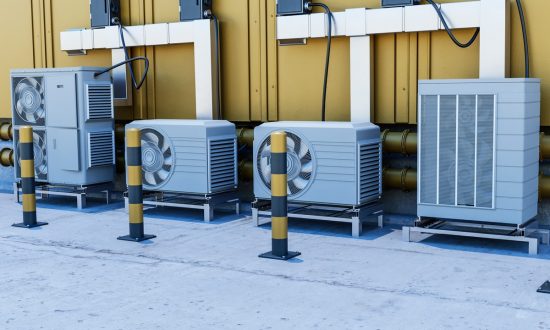
Definition of refrigeration
Refrigeration is a technical discipline that deals with the production and use of artificially generated coldness. This includes the design, construction and maintenance of refrigeration machines that are needed to realise the required application parameters.
How important is refrigeration for different industries?
Temperature and cooling control is of great importance in many industries. Efficient and flexible cooling systems are required in the following industries, among others:
- Food industry and catering (e.g. hotels, canteen kitchens, restaurants, companies in the food processing industry).
- Retail (e.g. supermarkets for the provision of fresh food such as fish, fruit, meat and dairy products).
- Medical facilities (e.g. hospitals, laboratories, pharmacies, doctors’ surgeries. Temperature control of sensitive medicines, vaccines, blood products and certain instruments is particularly important here).
- Event industry (e.g. for the creation of temporary ice rinks for sports and show events).
- Chemical industry (e.g. production of medicines and other products that would not be possible without refrigeration systems).
Would you like to optimise the planning of your refrigeration systems? Then get in touch with us: +49 2841 91840 or use our contact form.
The development of refrigeration at a glance
Even in ancient times, people were already thinking about technical possibilities for cooling. Over the centuries, impressive progress has been made in the field of refrigeration technology. The history and development of refrigeration is presented below.
Evaporative cooling in clay pots
Drinking water was cooled by utilising the evaporative cooling effect when stored in porous clay vessels. Small amounts of water seep through the pores of the containers and evaporate on the outside, cooling the contents. Evaporative cooling can also be utilised by wrapping containers with damp cloths in strong sunlight.
Natural ice and cold mixtures
People have been using snow and ice to cool their food and homes since early times. In winter, natural ice was stored in the form of piles of snow or large blocks of ice in suitable places such as ice cellars so that it remained available in summer.
The development of the first chillers
Refrigeration as we know it today has been around since the first half of the 19th century. The American Jacob Perkins developed the first compression refrigeration machine, although it was not yet very reliable. From around 1870, the technology for refrigeration systems was already so sophisticated that bar ice could be produced on an industrial scale. The ice was mainly produced for warehouses and breweries. With the advent of electricity at the beginning of the 20th century, smaller and smaller refrigeration systems powered by electric motors came onto the market.
Fundamentals of refrigeration
Thermodynamic principles of chillers
In refrigeration systems, the change in state of the refrigerant is utilised to reduce the temperature. This term refers to the change in the aggregate state, which is dependent on temperature and pressure. The higher the pressure, the higher the temperature. There are also threshold values at which the pressure causes the refrigerant to change from a gaseous state to a liquid state. In the refrigeration cycle, these two states alternate depending on whether the refrigerant is on the hot or cold side of the cycle. By removing thermal energy on one side and adding it on the other, the temperature in the refrigerant can be lowered. According to the second law of thermodynamics, energy must be supplied from outside to compress the refrigerant.
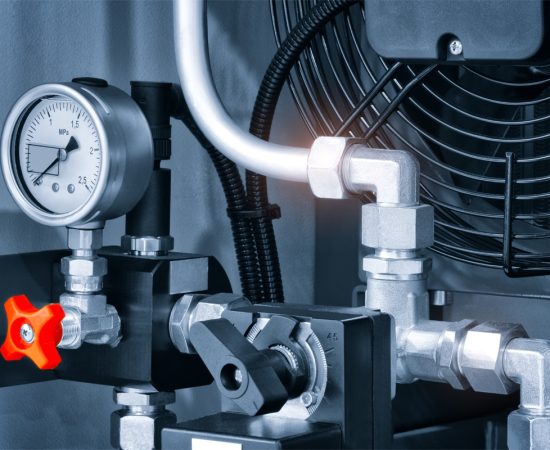
Working principles of chillers
There are different operating principles for cooling systems, which can vary depending on the area of application.
Compression chillers
Refrigeration systems with this operating principle are the most common and consist mainly of the following components:
- Evaporator
- Compressor
- Condensor
- Expansion valve
- Refrigerant
Heat energy is extracted from the medium to be cooled on the cold side of the system by vaporising the refrigerant. It then runs through a compressor and is liquefied again on the warm side, whereby the condensation heat is released. The refrigerant is then pressurised again to the pressure required for evaporation and the cycle starts all over again.
Absorption chillers
These refrigeration machines are so-called thermal compressors that do not require a compressor to generate compression. The temperature dependence of the solubility of two substances in relation to each other is utilised. The refrigerant is therefore in a solvent circuit, which is absorbed by a second substance at low temperatures. At high temperatures, the refrigerant is desorbed accordingly. In a refrigerant circuit with a heat exchanger, the process can be used to cool the desired medium.
Vapour jet chillers
In principle, this type of cooling system is a compression chiller that is driven thermally and not mechanically. The compressor, which is normally mechanically driven, is replaced by a vapour jet compressor. The entire process is divided into two separate circuits. In addition to the refrigerant circuit, the refrigeration system has a propellant circuit. The jet compressor converts the pressure-proportional potential energy of the motive vapour into velocity energy through the use of nozzles. The very fast-moving vapour mixture is converted back into pressure energy in a diffuser. Excess pressure is reduced in a throttle valve by returning part of the condensate to the vaporiser. The rest is fed into a vapour generator. Heat is transferred in the refrigerant circuit in the same way as mechanical refrigeration.
Important terms and concepts in refrigeration
The refrigerant
In cooling systems, the refrigerant is a natural or synthetically produced working substance that plays a decisive role in heat transfer as part of a thermodynamic conversion. In refrigeration systems, it absorbs heat from another substance. This may be products in a warehouse, for example, whose air needs to be cooled. At low pressure and low temperature, the refrigerant absorbs the heat energy from a room or a product to be cooled. At high temperature and high pressure, this energy is dissipated into another system. This can be the outside air or a connected heating system, for example.
Cooling generation and distribution
In refrigeration, energy is not generated but converted to provide thermal energy at a low temperature level. This energy can then be transported to the desired location via the cooling distribution system. Cooling distribution is essential for the efficient operation of refrigeration systems. Depending on the requirements placed on the refrigeration systems, an efficient refrigeration network must be in place to optimise the distribution of refrigeration energy. Good design is essential for this, as otherwise considerably more energy is used than is actually necessary.
Control technology in refrigeration systems
In principle, cooling systems always dissipate thermal process energy in order to cool goods, rooms or entire buildings. Energy consumption is a critical cost factor that needs to be optimised and minimised. Cooling systems can be operated much more sustainably with intelligent cooling distribution. However, efficient cooling distribution is hardly possible without appropriate control engineering. The efficiency of the entire system can be significantly improved by individually controlling and regulating the chillers.
Design of refrigeration systems
Fundamentals of system design for refrigeration
Good system design is essential for every large industrial and commercial system. This is the only way to harmonise factors such as requirements, system size, system performance and efficiency. Whether cooling systems in catering establishments or large refrigeration machines for the industrial manufacture of products: The energy input must be in reasonable proportion to the cooling capacity and at the same time fulfil the individual cooling capacity requirements.
Requirements analysis
Before deciding on the purchase of cooling systems, an individual requirements analysis must be carried out. All important factors that could affect the investment must be taken into account. Only when the requirements have been clarified can the next point be addressed.
Selection of suitable chillers
There are countless suppliers of cooling machines on the market that offer the right solutions for all requirements. One challenge is to select the right machines for the specific requirements.
Sizing of refrigeration systems
When purchasing refrigeration, correct sizing is essential for economically viable operation. Just as a single household does not need an oversized freezer that consumes too much electricity, a large restaurant cannot do anything with a small domestic refrigerator. This principle can also be applied to industry and commerce, which must calculate their capacities according to their requirements in order to be able to select a refrigeration machine with suitable performance and capacity.
Calculation of the cooling capacity
A careful cooling load calculation ensures that the selected chiller can fulfil the required purpose. In a deep-freeze room, for example, the storage temperature should not exceed -18° C. The amount of heat that must be extracted from the area within a certain time to maintain the desired temperature is known as the cooling load. This can vary depending on the time of day, which is why in most cases the cooling capacity is calculated in kW, taking the average cooling load into account. Heat flows and different heat sources that can affect the cooling capacity must also be taken into account.
Important load types for refrigeration:
- Product load
- Inner load
- Transmission or transfer load
- Device load
- Infiltration
All of these influences affect the energy requirement and the efficiency of the refrigeration. The internal load accounts for approx. 10 to 20 % of the total load. This includes, among other things:
- People who are in the refrigerated area
- Lighting
- Equipment and machines (e.g. forklift trucks)
The lower the cold room temperature, the greater the heat load caused by people. The person load results from the time spent in the cold room. The load due to lighting can be determined by the wattage of the lamps in relation to the lighting duration. In particularly large cold storage rooms, packaging machines, forklift trucks and other equipment may also increase the heat load.
The transmission load accounts for between 5 and 15 % of the total load. These are heat losses that occur via thermal bridges such as walls, floors and roofs. To determine the transmission load, the so-called U-value is important, which can be obtained from the manufacturer of the insulation materials of building structures. If there is no insulation, the transmission load can be determined using the floor area and the temperature difference between the floor and the room.
Infiltration is the term used to describe heat losses due to air exchange that occur when doors and access points are opened and closed in cold areas. Infiltration must be taken into account with around 1 to 10 % of the total load. These values can vary if controlled ventilation is installed. Such ventilation is required in very large cold rooms or when storing products that produce CO2 (e.g. fruit, vegetables and plants). However, this only applies to systems that operate above freezing point.
Finally, the product load accounts for the largest share of the total load at 55 to 75 %. All heat quantities generated in connection with the stored products must be taken into account here. A product change also influences the heat input. If new products are stored, both the product’s own heat and the thermal energy of the packaging must be dissipated. The heat load is determined by the mass of the product, the storage and insertion temperature and the specific heat capacity of the product. Tables are usually available to facilitate the calculation.
Selection and design of components
The cold room calculation is the basis for the design and selection of refrigeration system components. The more precisely the cooling load is calculated, the smaller the safety buffer for the cooling capacity must be. When selecting suitable refrigeration technology, the components should therefore be matched to each other and their capacity should be neither too generous nor too low.
Safety aspects during designing
When designing chillers, there are more hazards than with conventional systems in industry and building services. The refrigerant used in a closed circuit harbours potential risks for environmental and operational safety.
These include, among others:
- Physical and chemical refrigerant properties
- Problems due to unauthorised fill levels
- Hazards due to pressure and very high or very low temperatures in the refrigerant circuit
- Formation of a hazardous explosive atmosphere
- Mechanical hazard due to moving parts
- Leakage of coolant
- Noise
Standards and regulations for the safety of refrigeration
There are a variety of regulations in place for the manufacture and operation of refrigeration systems. In Germany, the following guidelines are of particular importance for designing in refrigeration:
- Pressure Equipment Directive 97/23/EC (PED)
- Machinery Directive 2006/42/EC (MRL)
- DIN EN 378-2
- European Refrigerant Regulation (F-Gas Regulation)
All relevant safety risks should be considered at the design stage of risk management for refrigeration. In addition to labour and operational risks, potential environmental damage caused by refrigerant leaks due to improper maintenance, defects or other influences must also be taken into account. Work on cooling systems and chillers should always be carried out by qualified specialists.
Space optimisation and space utilisation for refrigeration systems
Efficient room design is particularly important for refrigeration systems. This applies not only with regard to optimising the use of storage and floor space, which is recommended for all storage facilities, energy and cooling efficiency should also be considered when using refrigeration. Just as the intelligent use of refrigerators can save energy in private households, this also applies to large refrigeration machines.
Integrate refrigeration into existing rooms in the best possible way
Especially if refrigeration systems are to be retrofitted, it is recommended that they are integrated as seamlessly as possible into existing premises. To this end, the necessary infrastructure must be taken into account during design (e.g. sufficiently resilient power supply). However, factors such as any adequate mechanical ventilation and fire protection equipment may also need to be taken into account.
Software solutions for designing refrigeration systems
There is a range of software tools from different manufacturers for designing cooling systems and chillers. Depending on requirements, there are solutions for individual design areas as well as for designing entire systems. Some examples of frequently used software in this area are:
M4 PLANT from CAD Schroer GmbH
This 3D CAD software can be used not only to design pipework for industrial systems of all kinds, but also to specifically design refrigeration systems. M4 PLANT is particularly impressive due to its ease of use and scalability to any size of system.
CoolTool from CoolTool Technology GmbH
This technical software enables the quick calculation of all important factors for refrigeration systems, from air volume calculation with diagrams to the calculation of the cooling load and the complete design of cooling systems including pipework. The modular structure facilitates customised configuration according to requirements.
ValveCalc from GEA
The ValceCalc working environment from GEA is specially designed for the construction of complex pipework in refrigeration systems. Users can easily create pipe systems including safety valves and vessels using drag-and-drop. Information on the refrigerant, outlet pressure and various calculation standards for fittings and other components are also integrated.
COOLSTAR from ja-soft
A complete modular solution for creating complete pipe networks, taking into account the thermodynamic equations of state of all common refrigerants. The manufacturer-independent programme can be used with components from a wide range of manufacturers.
Why use digital design tools for refrigeration?
Digital design tools make the designing of chillers considerably more efficient than traditional manual design. Calculations are easier and quicker to carry out, while the potential for errors is reduced thanks to the use of standardised procedures and components. In addition, 3D visualisations allow the entire refrigeration system to be fully inspected at the designing stage.
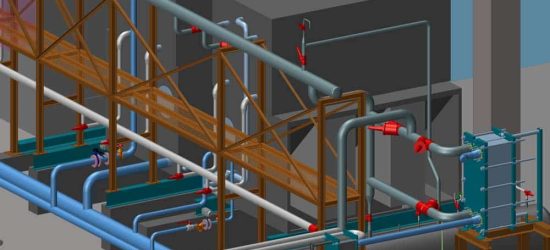
Future prospects and trends in software development
3D visualisation is a particularly big advantage, because in the long term, virtual reality and augmented reality will make the design concepts for all projects easier to understand. Design times are also reduced because potential errors are detected before even a single pipe has been put in place. Artificial intelligence can become a problem solver, especially for recurring design steps, but also for customised special solutions.
Augmented reality in system design »
The more systems are designed and implemented for refrigeration, the better the AI can support the design department. Among other things, this is made possible by machine learning, which eliminates the need for human users to painstakingly integrate empirical values and data into the software. This shortens design and development times and therefore significantly reduces costs in this sector. Cloud-based solutions are indispensable for AI solutions and machine learning. Not only do they enable more efficient utilisation of server capacities and other digital resources, they also make the whole project cheaper. Companies that rely on SaaS solutions in the cloud no longer need to set up their own infrastructure, which incurs high costs and can only be scaled with great effort. Cloud systems, on the other hand, can vary their capacity as required.
Would you like to optimise the planning of your refrigeration systems? Then get in touch with us: +49 2841 91840 or use our contact form.
Refrigeration systems in practice
Industrial refrigeration technology
Applications in the food industry
Refrigeration is absolutely indispensable in the food industry. Whether for production and storage, transport in refrigerated lorries or for storage in restaurants and canteen kitchens – without refrigeration systems, the supply of fresh goods such as meat, fish, fruit or dairy products would be virtually impossible to maintain. This also applies to the retail trade, which sells food to end consumers.
KFC Engineering uses M4 PLANT to ensure a continuous cold chain in a system-relevant industry »
CO-REF – High-quality compressors for the refrigeration and freezing industry »
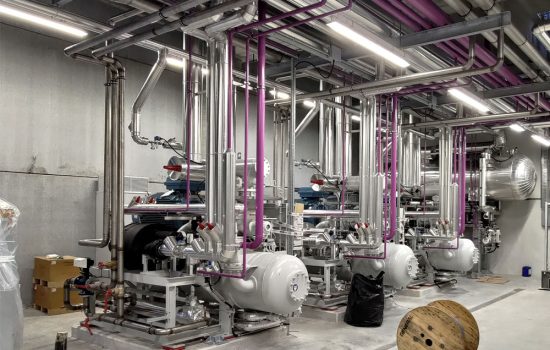
Applications in the pharmaceutical industry
The development, production, storage and delivery of heat or cold-sensitive medicines, vaccines or instruments would not be possible without refrigeration. Maintaining cold chains is particularly important for onward transport to pharmacies, doctors’ surgeries, laboratories and clinics.
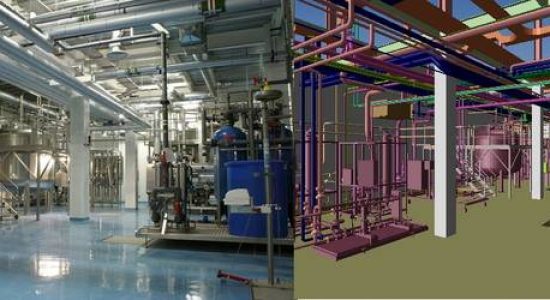
Applications in the chemical industry
Many complex industrial materials and everyday products require extensive production facilities in the chemical industry. The use of refrigeration machines is essential, as many ingredients only develop the desired properties at certain temperatures and cannot be processed in any other way. In addition, high-performance cooling systems must be available for certain applications in order to set physical processes in motion that are required in the chemical industry.
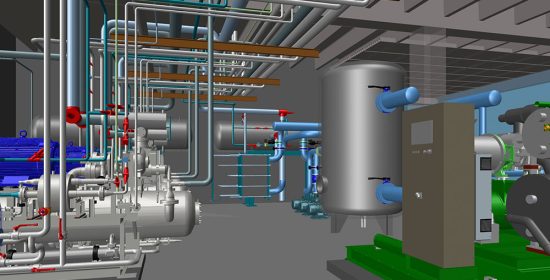
The use of commercial refrigeration systems
Only a small proportion of refrigeration is used in private households. The refrigerators used in the cellar and kitchen are tiny compared to what is required for the commercial sector. Supermarkets and grocery shops, for example, must be able to keep fresh food at refrigerator temperatures as well as offer frozen goods in the required quantities. This is inconceivable without large refrigeration systems. The same applies to restaurants and other catering establishments, which also rely on storage capacities with refrigeration technology to stock fresh food and frozen goods. To avoid interrupting the cold chain, there are high-performance refrigerated containers that are transported on road and rail vehicles and guarantee the freshness of the goods from production to delivery.
Supplier of refrigeration systems
There are a large number of suppliers of refrigeration systems in the refrigeration industry. They analyse the requirements of their customers and provide comprehensive design and support during the implementation of refrigeration systems. The exact services of the individual providers can be viewed on their own websites.
Klima Becker Anlagenbau GmbH
Klima Becker Anlagenbau GmbH specialises in refrigeration, air conditioning and ventilation technology. With branches in various countries, the company also has an international presence.
coolconcept GmbH takes on the design, installation and maintenance of refrigeration systems for its customers. The company also takes on the maintenance, expansion and servicing of cooling systems.
MULTI Kühlsysteme GmbH supplies individual components and also delivers entire systems. The company offers inventory, overall design, technical processing, production, assembly, control with programming, commissioning and after-sales service as services.
KTA – Kältetechnischer Anlagenbau GmbH
KTA Kältetechnischer Anlagenbau GmbH offers consulting, project design and installation of refrigeration systems. The company also offers maintenance and service. The company specialises in air conditioning systems, air conditioning cabinets, liquid chillers and room air cooling.
Would you like to optimise the planning of your refrigeration systems? Then get in touch with us: +49 2841 91840 or use our contact form.
Challenges and innovations in refrigeration
The energy efficiency of refrigeration is constantly improving thanks to more effective thermal insulation and more energy-efficient electric motors. However, developers of refrigeration equipment regularly face major challenges when searching for the optimum refrigerant. Some refrigerants that have perfect properties for operation are harmful to the environment. Others, on the other hand, are environmentally friendly but may not be suitable for certain applications.
When selecting the refrigerant, these aspects must therefore be taken into account early on in the design process. This applies in particular to the harmfulness of refrigerants and propellants to the climate. Even with perfectly sealed chillers, the issue of disposal comes into play at the latest when the system is decommissioned. The global warming potential (GWP) of refrigerants is often significantly higher than that of CO2. Corresponding regulations and provisions for reducing emissions are set out in the European F-Gas or Refrigerant Regulation.
Conclusion
Many industrial processes would be inconceivable without refrigeration. The lack of refrigeration equipment would have an even more serious impact on the availability and production of food, medicines and hi-tech components. When designing refrigeration systems, the individual requirements are particularly important and ultimately determine the operating costs of the subsequent system. The careful creation of 3D models using modern software is just as useful as the use of modern technologies such as XR, cloud computing and artificial intelligence. The use of climate-friendly refrigerants and increasing energy efficiency is becoming increasingly important in terms of environmental compatibility.
FAQ – Refrigeration
Refrigeration technology is based on physical principles such as the evaporation and condensation of refrigerants.
State-of-the-art applications range from air conditioning systems to industrial cooling systems and are crucial for various industries.
Refrigeration technology has evolved from simple cooling methods to advanced, energy-efficient systems.
Safety aspects include the handling of refrigerants, pressure and temperature controls and the prevention of leaks.
Refrigeration plays a central role in the food industry, medicine, IT and many other areas by controlling temperature and ambient conditions.

